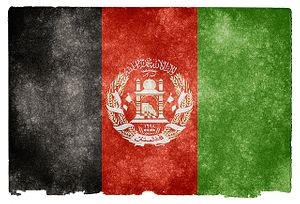By Sabera Azizi

On the morning of November 7 in Kabul, a weeping father rushed with his sons to the scene of a red car engulfed in flames. The ground was covered in blood, and remnants were stuck on adjacent tree branches. Bystanders brought a white cloth as the family picked up the burnt and bloody remains of their beloved.
This was the scene of the attack that took the life of Yama Siawash, a calligrapher and poet, a renowned journalist and former TV anchor.
Siawash was well-known for shedding light on corruption, exposing government officials, and questioning the Afghan government’s official narrative. In one of his last programs, he challenged a minister who was involved in a controversial deal with the Taliban. This was the final straw in the mounting pressure against Tolo News, a local news channel and Siawash’s employer at the time, to dismiss him. According to Siawash’s childhood friend, Tolo News was pressured to fire Siawash because he echoed the realities of the country. His childhood friend further noted that Siawash received threats due to his outspokenness.
Siawash’s tragic murder brings to the surface two prevalent phenomenon plaguing the vibrant Afghan media: government failure to protect journalists and self-censorship.
Not only did the Afghan government fail to protect Siawash despite threats, but his assassination also happened on the government’s watch. The vehicle carrying Siawash was the property of the Afghan government. Further, Afghanistan’s vice president, Amrullah Saleh, confirmed that the explosives attached to the car were military-grade. Saleh pointed out that the explosives used in the attack weren’t home-made explosive compounds, which the Taliban often use. Although the Afghan government was quick to blame the Taliban, according to Al Jazeera, the Taliban hasn’t claimed responsibility for the attack.
Siawash was eloquent, blunt, passionate, charismatic, and uncensored — often a fatal combination in Afghanistan.
A Human Rights Watch report on media freedom in Afghanistan notes that journalists often self-censor as a survival mechanism. Journalists self-censor in part due to a lack of protection by the Afghan government. Afghan journalists are cautious of how much light they shed on government controversies, weighing telling the whole unvarnished truth with their desire to survive. The U.S. State Department’s annual human rights report on Afghanistan confirmed this, noting that “journalists reporting on administrative corruption, land embezzlement, and local officials’ involvement in narcotics trafficking engaged in self-censorship due to fear of violent retribution by provincial police officials and powerful families.”
Apart from failing to protect journalists, the Afghan government has also flirted with the idea of curtailing the media. Earlier this year, the president’s cabinet was toying with new amendments to essentially restrict the press. The amendments were recalled after a media outcry.
Time and again the Afghan government claims that free media is a red line in peace talks with the Taliban. However, threats to free speech not only come from the Taliban but government officials and powerful individuals. According to Human Rights Watch’s report, most of the threats against Afghan journalists “come from individuals acting on behalf of powerful government officials or influential local actors, including militia leaders and so-called warlords.”
Amplifying the realities on the ground and exposing government incompetency is akin to a crime in Afghanistan. Siawash knew the price that Afghans with large platforms pay for not censoring themselves. On the page where Siawash published his Persian calligraphy, is a piece which roughly translates: They broke us for the crime of being a mirror.
No comments:
Post a Comment